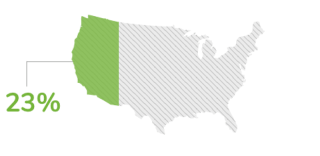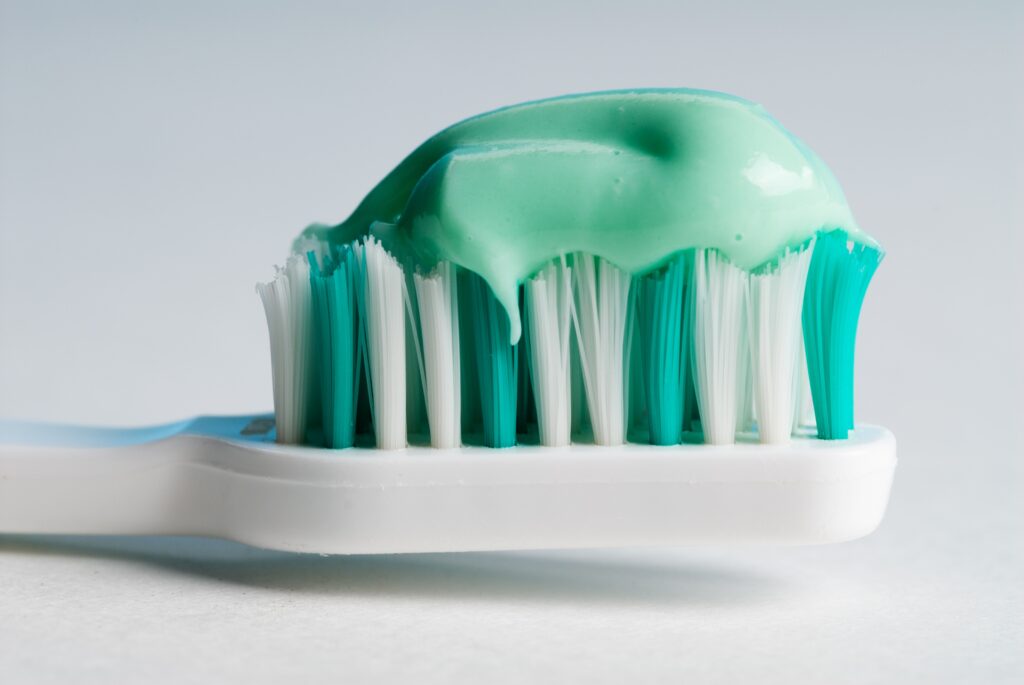Do you need braces but are afraid of how much they cost? With braces costing anywhere between $4,800 to $7,135 on average for adults (and sometimes more), it’s no surprise that most people bristle at the expense. But don’t let the cost of braces deter you from undergoing this vital treatment that can transform your smile and confidence, not to mention improve your dental health. Braces are never cheap, but even without dental insurance, there are ways to afford this treatment at an orthodontist near you.
The key to figuring out how to afford braces is understanding your options. From the types of braces available to insurance alternatives that can help you lower your out-of-pocket costs, there are plenty of ways to save on orthodontic treatment.
In this guide, we’ll answer your most pressing questions including “how much do braces cost?”, “what factors affect the cost of braces?”, and “how can I save on braces?”.
How Much Do Braces Cost Without Insurance?
If you don’t have coverage, you may be wondering “how much do braces cost without insurance”, and we don’t blame you. According to the American Dental Association’s (ADA) 2018 dental fees survey, the average cost of braces was between $4,800 to $7,135. However, the cost of braces without insurance, on average, is about $6,000 to $7,000. This cost varies by type of braces you want, your dental plan, and where you live in the U.S.
Average Cost Comparison
Braces with Insurance: $4,800 to $7,135
Braces without Insurance: $6,000 to $7,000
Since many people break down their expenses with monthly budgets, you may be wondering, “how much do braces cost a month?”. You would need to break down your total treatment cost by the number of months your treatment is expected to take.
For example, say your braces cost is at the higher end of the spectrum ($7,000), and your treatment timeline is 2 years. You would divide $7,000 by 24 months, which would be approximately $292/month.
*This is just a hypothetical example and does not reflect the actual cost of your treatment.
According to the National Association of Dental Plans (NADP), 77% of Americans had dental benefits as of 2016. That means there is still 23% of the population who have no dental coverage. And on top of that, many insurance programs don’t cover orthodontics for adults and only cover a portion of orthodontic care for children.

Approximately 23% of the American population does not have dental insurance.
Source: National Association of Dental Plans (2016)
This leaves many Americans trying to figure out how to afford braces without insurance coverage and frustrated when faced with the reality of how much braces cost.
Why Are Braces So Expensive?
Like many other dental and medical treatments, braces are costly because tooth movement is slow. Applying light pressure to guide the tooth over a long span of time gives the best results but requires a drawn-out process to complete. These lengthy visits, along with professional care, are the main factors that drive up the cost of treatment.
The average treatment timeline for traditional metal braces is approximately two years. Throughout that timeline, you will need to visit your dentist or orthodontist every four to six weeks for adjustments—each visit, while necessary, adds to the cost of your braces treatment.
That said, there are other factors that can also affect the cost of your braces treatment, which is why pricing can vary from patient to patient. These factors can include:
Whether You Are an Adult or Child
Based on the 2018 dental fees survey by the American Dental Association (ADA), the average kids’ braces cost between $4,685 to $6,500, while adult braces cost about $4,800 to $7,135. Adult braces are more expensive because adult bone is harder. The harder the bone the longer it takes to move the teeth.
Type of Braces You Choose
Nowadays, there are many different types of braces, each of which has their own cost ranges. The differencing in pricing can be attributed to the different materials used (traditional metal vs. tooth-colored ceramic wire), variances in treatment (attached to the front of teeth vs. behind the teeth), and more.
| Types of Braces | Cost | Pros | Cons |
|---|---|---|---|
| Metal | $3,000 to $5,000 | Most Affordable | Noticable |
| Ceramic | $4,000 to $5,000 | Less Noticeable | Affixed to Teeth |
| Metal | $8,000 to $10,000 | Discreet | Longer Treatment |
| Ceramic | $4,000 to $7,400 | Invisible/Removable | Typically Not Covered by insurance/discount |
Here are some of the most common types of braces and their typical costs:
- Metal Wired Braces: $3,000 to $5,000 Metal wired braces are the most common type of braces. Metal braces are made out of stainless steel and the brackets are fixed, or bonded, onto the teeth, while the wire is secured with elastic ties made from rubber.
- Note: For people who have nickel allergies, gold-plated stainless steel or titanium brackets can be used instead.
- Ceramic Wired Braces: $4,000 – $8,000 These are a lot like traditional metal braces; the difference is that ceramic wired braces have clear plastic brackets and wires, so they aren’t as noticeable and match the color of your teeth. You’ll also have clear elastic ties. While they are more cosmetically appealing, these braces tend to break more easily compared to metal braces and usually cost about $1,000 – $2,000 more.
- Lingual Braces: $8,000 – $10,000 These braces are placed on the backside (lingual surface) of the teeth and are much more discreet. Despite the aesthetic benefits, the process of applying lingual braces is very delicate and more time consuming due to the tongue being in the way.
- Clear Braces: $4,000 – $7,400 More commonly known as Invisalign, these braces are custom-made, clear plastic trays that look similar to clear retainers and align your smile without brackets or wires sitting on the teeth.
- Note: Not everyone is eligible for these. It all depends on the condition of your mouth and what type of work is needed to correct the problem. Additionally, most plans do not offer discounts on Invisalign because they are considered a cosmetic treatment.
Where You Live in the U.S.
Due to the differences in cost of living in different areas of the country, braces may cost more depending on where you live. For example, treatment in metropolitan cities is typically more costly than at rural practices due to operating costs in those regions.
Your Dental Insurance Plan (If Any)
Not all dental insurance is created equal. Some policies may offer more coverage than others, especially when it comes to braces and other orthodontic treatments. And, if you don’t have any dental coverage at all, you typically have to pay more out of pocket.
No matter what dental treatment or procedure you undergo at the dental office, the cost will usually depend on these factors.
Ways to Save on Braces
Beyond discounts with a dental savings plan or dental insurance, many orthodontists accept additional methods of payment in an effort to help their patients pay for braces by making the price more manageable. Some of these payment options might include:
- Payment plans through the orthodontist office: Your orthodontist may allow you to split the treatment cost into monthly payments that are more manageable for your budget.
- CareCredit ®: CareCredit is a healthcare credit card that qualifying individuals can use to help pay braces—if your orthodontist accepts this form of payment.
- Dental savings plan: With a dental savings plan, the cost of braces is typically between $3,000 to $5,000. This means you can expect to save $1,000 to over $2,000, both for children and adult braces. We recommend the Dental Access Plan by the Aetna Dental Access network for braces.
- Discounted services at a school: In some cases, you may be able to undergo treatment with an orthodontist in training or apprentice at a discounted cost.
- HSA (or similar): If you have a health savings account (HSA), flexible spending account (FSA), or health reimbursement account (HRA), you put money aside (pre-taxes) to pay for treatment.
When choosing any sort of payment plan, make sure to choose one that works with your budget. If you miss payment deadlines, you could end up owing interest on the entire amount or even harming your credit score. We encourage you to ask your dentist plenty of questions about your payment plan to make sure it will work for you.
Actual costs and savings may vary by provider, service and geographic location. We use the average of negotiated fees from participating providers to determine the average costs, as shown on the chart.
The select regional average cost represents the average fees for the procedures listed above in Los Angeles, Orlando, Chicago and New York City, as displayed in the cost of care tool as of June 2020.
Affordable Braces with a Dental Savings Plan
If you cannot afford braces without dental insurance, consider using a dental savings plan, like our Dental Access Plan by the Aetna Dental Access network. The Dental Access Plan has over 226,000 dental locations (as of September 2017, Aetna Enterprise Database) and offers 15-50% of savings on traditional metal and ceramic braces without any kind of waiting period.
| Average Cost of Braces & Potential Savings | ||||
|---|---|---|---|---|
| ADA | Aetna Navigator Description | Usual Fee | Discounted Fee | Member Savings |
| D8080 | Comprehensive Orthodontic Treatment-Child | $5,952 | $3,484 | $2,468 |
| D8090 | Comprehensive Orthodontic Treatment-Adult | 15-50% Discount | ||
Orthodontic coverage through a traditional insurance plan is usually only available for dependent children. However, with our dental plans, savings are available for adults and children right away.
What’s Not Discounted by Dental Plans?
We want to be completely clear that NO dental plan discounts at-home clear aligners like what Smile Direct Club and Candid offer, since they are not administered by a dental professional.
However, Invisalign can sometimes be discounted with our plans if the orthodontist assigns the same ADA code to it as braces. Since this is a newer treatment option, some count it as braces (a dental procedure), whereas others consider it a product they sell.
We’d recommend—if you have your heart set on Invisalign— looking up an orthodontist near you that’s in our network for the Dental Access Plan and calling them to see if you can get a discount on Invisalign with this plan at their office. Some general dentists may also be trained in Invisalign.
Save on Your Braces Treatment
At first sight, you may have been discouraged when finding out how much braces cost without insurance. However, now you know there are a variety of ways you can save on this orthodontic treatment and make your smile goals a reality, even if you don’t have dental insurance. Whether you need to straighten your teeth or align your bite, braces can be affordable for any budget.
Sign up for one of our dental savings plans to start your savings on braces today.
Summary: We recommend the Dental Access Plan for braces and orthodontics (Powered by the Aetna Dental Access Network)
- Reduce cost of braces 15 – 50% immediately
- Large nationwide panel of orthodontists
- Well-known and established brand name
- Plan includes braces for both children and adults
- High savings for all other dental needs included
- Plan priced at an everyday low price, starting at $119 a year
This content is not intended to be a substitute for professional dental advice, diagnosis, or treatment. Always seek the advice of your dentist with any questions you may have regarding your oral health.







Straightening Out Management Assignments Like Braces for Success
Just like braces align teeth for a perfect smile, structured guidance helps students streamline their academic work. As a management student, I often struggled with structuring reports, analyzing business strategies, and presenting my findings effectively. That’s when I found Management Assignment Help. [Link deleted]